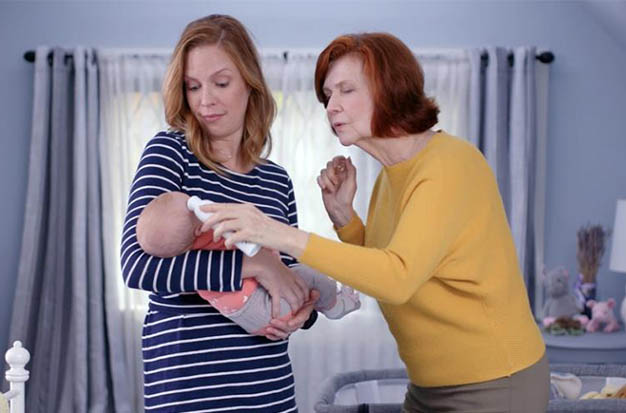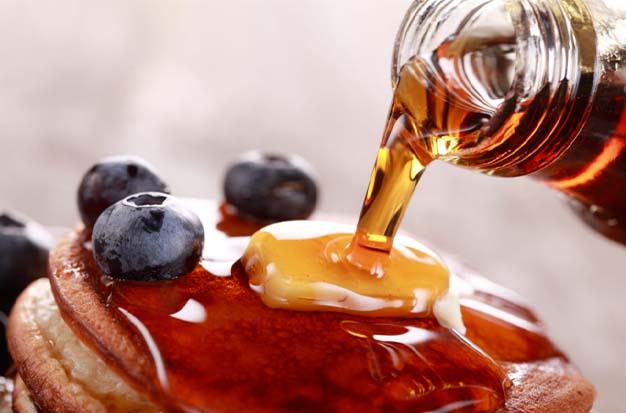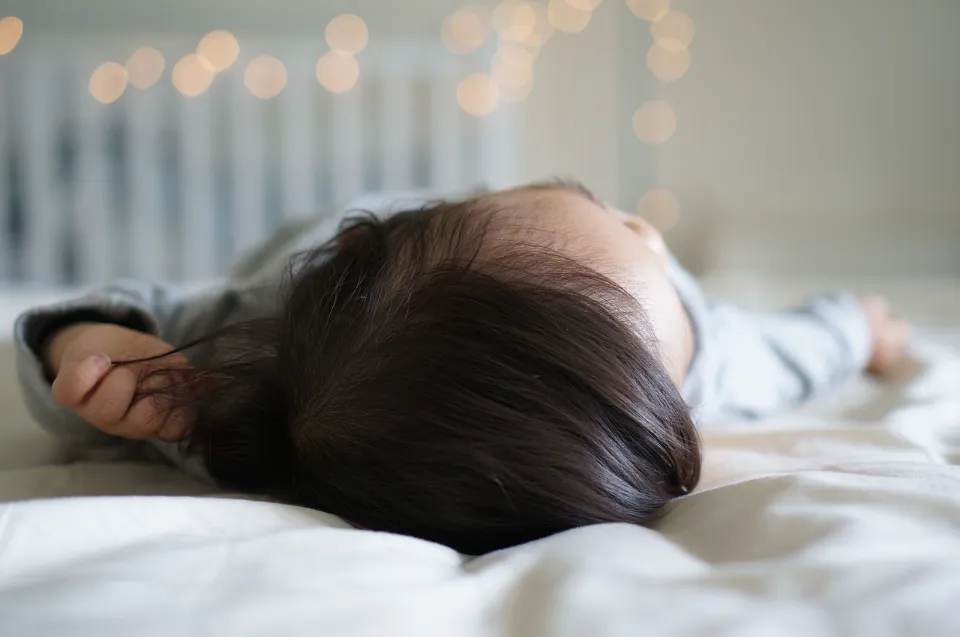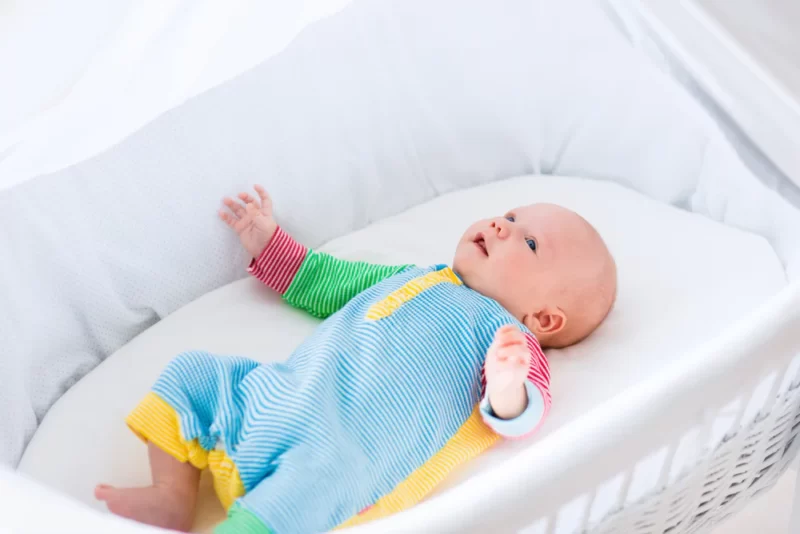Many first-time parents are asking themselves, “Should I put socks on a baby with a fever?” in light of the recent cold and flu season.
In our article below, we’ll respond to a few of the most frequently asked questions and give some suggestions.
What Is a Fever?
The main thing to keep in mind about a fever is that it is the body’s way of fighting an infection. Therefore, while your child may experience discomfort from a fever, it is actually just a way for their developing immune system to fight off a cold or minor infection. The temperature of your child should be closely monitored with any child, but especially with babies and young children.
For a child, a fever is defined as a temperature of more than 38°C.
Keep an eye out for additional symptoms like lethargy, poor eating, and sleepiness that could point to a more serious infection and progress into a convulsion or seizure. To accurately determine your baby’s temperature, make sure you invest in a high-quality digital thermometer. Although sometimes babies feel hot to the touch, their internal temperatures are usually normal.
Although fever can appear quite suddenly, it’s crucial to keep in mind that a high fever doesn’t always indicate a serious illness.
Should I Put Socks On Baby With Fever?
Unexpectedly, you should avoid giving your baby socks when they are feverish.
Infants’ body temperatures are more affected by their environment. In fact, children from birth to the age of three absorb a lot of heat from their surroundings outside and may also emit a lot of heat. This could lead to inaccurate temperature readings that are either too warm or too cold.
Therefore, any method that encourages heat escape through the skin may cause their body temperature to drop quickly. Don’t wrap your child in a blanket or put socks on them if they start to feel a high fever while their hands and feet are still cold.
More sickness, exhaustion, or even severe seizures may result from this as they will become even warmer.
What Should My Baby Wear With A Fever? – How To Dress A Baby With A Fever
Although you might feel compelled to cover your helpless baby with a blanket at first, doing so might make him feel worse. If the temperature outside is between 70 and 74 degrees Fahrenheit, the child should instead be lightly covered. It is ineffective to try to make the baby sweat in order to reduce the temperature.
He should be covered in a thin layer of soft, ventilated fabric, like cotton. The heat can be decreased by wearing lots of footie jammies. As was previously stated, if the infant is overdressed, he may become overheated and experience an increase in fever.
You should also understand the distinction between shielding him from a cold (which would tell his body to raise the heat) and suffocating him with clothing (which would prevent the temperature from dropping).
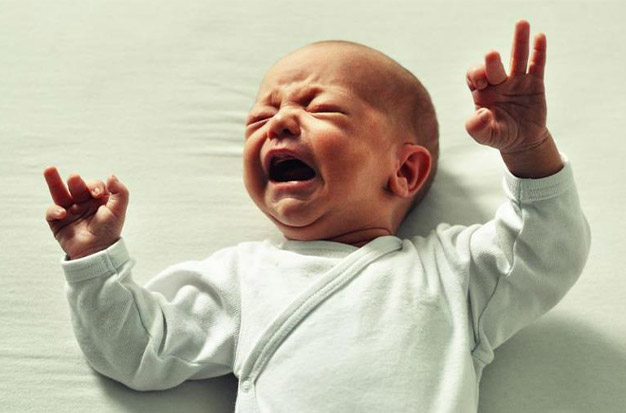
The Dos When Your Baby Has a Fever
Use Medication
Before administering any medication to a child who is younger than 3 months old, make sure to consult a doctor (babies under 3 months old should always have their fever evaluated by a doctor). Acetaminophen (Tylenol), which is available for babies over 3 months old, can be used to lower fevers. Ibuprofen (Motrin or Advil), which is available for babies over 6 months old, is another option. To determine the right dosage for your baby’s particular weight, refer to the instructions on the package. Note that ibuprofen can be taken every 6-8 hours while acetaminophen can be taken every 4-6 hours.
Remember that fevers are healthy and should only be treated if your baby is in pain or if it rises to 102°F. If your baby is shivering or has chilled, medication might also be helpful. It’s acceptable for reductions to occur gradually; a fever does not need to return to normal right away. In roughly 1-2 hours, a drop of 2-3°F is to be anticipated. The Kinsa app is a great tool for monitoring a baby’s temperature changes.
Keep Your Baby Hydrated
Your child might become dehydrated quickly and feel exhausted if they have a fever. Significant issues and discomfort may worsen as a result of this.
Make sure your infant is adequately hydrated by giving them drinks as needed to avoid dehydration. If there are signs of dehydration, a rehydrating medication like Pedialyte may be used. Additionally, if you are nursing or bottle-feeding the infant, feed him or her more frequently.
Use A Lukewarm Compress
Fill your tub with an inch or two of tepid water, and use a washcloth to dribble it over your child’s trunk, arms, and legs to lower her core temperature if she is vomiting and unable to swallow the medication.
The Don’Ts When Your Baby Has a Fever
Don’t Starve A Fever
David L., a pediatrician, advises against following the proverb “Feed a cold, starve a fever.” Doctor Hill is the author of Dad to Dad: Parenting Like a Pro. When children with a fever do want to eat, provide them with a generally healthy, well-balanced diet even though they may not be as hungry as usual. The ability to fight infections may be improved in well-fed children.
Don’t Overdress Your Baby
A child who is developing a fever will typically dress warmer than other children in the space. But Dr. Tran cautions against overdressing or wrapping herself in heavy blankets, as these actions could prevent body heat from evaporating and raise the temperature even higher. As she breaks her fever, your child will also want to cool off, and Dr. Don’t go overboard, Hill cautions.
Additional Tips To Prevent Or Reduce Fevers In Babies
It’s critical for toddlers’ health that fevers are avoided. Additionally, it can aid in the prevention of bronchitis and other issues like ear infections. Your pediatrician or doctor will have the final say on the best way to prevent or lower a fever, but in the interim, the following advice might be useful.
Make sure your toddler has access to plenty of liquids, such as water, juice, or popsicles, to keep them hydrated.
Don’t leave them exposed in warm areas for too long. If at all possible, keep them outside, but limit their time spent outside when the temperature is over 80 degrees Fahrenheit or the humidity is high.
Encourage your child to consume simple-to-digest foods that are light.
When they have a fever, avoid giving them a bath or a shower because it might make them shiver and make them feel even colder. Use only lukewarm water if you wish to prevent a significant drop in temperature.
To help create a relaxing atmosphere, dim the lights in your home at night and keep the noise level low.
It’s critical that you keep a close eye on your infant or toddler as soon as they begin to exhibit symptoms of a fever. You should also take them to the doctor as soon as possible for a proper diagnosis. An anti-fever medication may make them feel better while you try to figure out what’s wrong or sick with them.
Conclusion
Hopefully, you now know the answer to the question, “Should I put socks on a baby with a fever?” and other related questions.
Although it’s normal for children to experience fever, which you can totally treat at home, you should see the pediatrician right away if you notice any abnormalities.
